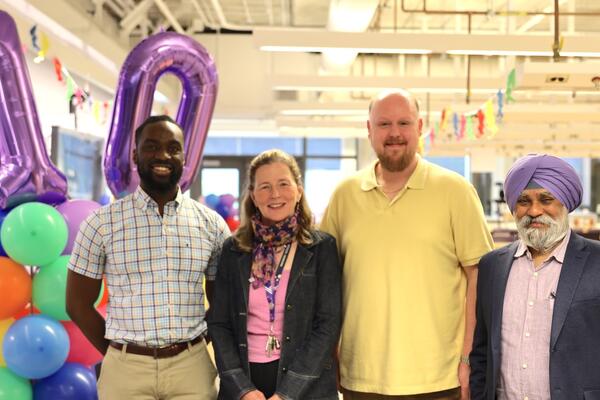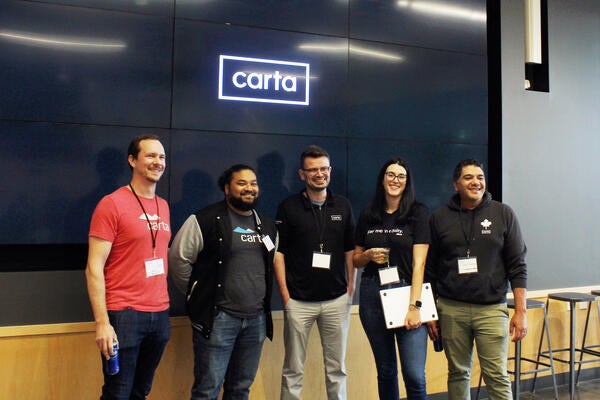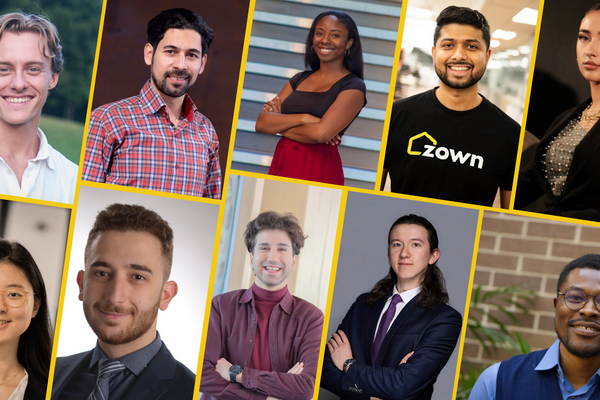
Green energy program grows in virtual classroom
Online green energy diploma connects professionals with professors in real time

Online green energy diploma connects professionals with professors in real time
By Suzanne Bowness Marketing and Strategic Communications
Professor Jan Huissoon wants engineers to learn about green energy online without ever having to leave the office. But he also believes that people learn best when they interact with professors.
That’s why Huissoon is excited about Waterloo Engineering’s online Green Energy Graduate Diploma that will offer convenient, live and engaged learning to busy professionals.
“Being able to interact with the instructor and the class sets this program apart,” says Huissoon, chair of the Department of Mechanical and Mechatronics Engineering and the force behind the new Green Energy Graduate Diploma to be launched this fall. Some of the courses will include:
How do you create an interactive experience online?
The program will employ a Cisco technology called Live-Link that enables students to log in with their web cams. From the instructor’s view, a large video screen appears divided into a grid showing all students. When a student wants to ask a question, the instructor simply minimizes his or her own image and enlarges the participant’s image.
Interactive teaching assistants and IT staff help with technical issues, and class sizes are limited to about 20 people — the number of students who can reasonably fit on the screen.
Busy professionals can engage in lectures while at the office
Since participation is central, courses will be held at scheduled times, but because the classroom is virtual, students can connect from work rather than commuting to the University.
This is just one example of how Waterloo enables learning for students from around the world. Long considered a leader in online learning, Waterloo has more than 400 online course offerings, eight fully online undergraduate programs and 10 masters degree programs, with several more in development.
"While some courses can be offered at scheduled times, others are designed to allow students and professionals in any time zone or location the ability to learn on their own schedule," says Cathy Newell Kelly, director of Waterloo's Centre for Extended Learning.
Although the Green Energy program’s flexibility is designed to appeal to graduates working in industries such as green energy, construction, and design, full-time engineering students interested in a concentration in green energy are also expected to enroll. Part-time students will take one course each term for a total of four terms to earn the certificate. Since the courses are offered in real time, Huissoon expects a mostly domestic rather than international attendance given the constraint posed by time zones.
Anyone interested can email greendiploma@uwaterloo.ca to register for a one-hour promotional session scheduled for 3 p.m. on June 19, 2014. “If people are unsure about the online environment, they will be able to participate. We’ll have instructors live online so people can see what it is like,” he says.

Read more
The Pearl Sullivan Engineering IDEAs Clinic marks a decade of delivering experiential learning embedded in the real world and mentored by industry professionals

Read more
From AI-powered cap tables to complex valuation tools, Waterloo co-op students drive Carta’s innovation while shaping its engineering talent strategy

Read more
From transforming solutions for homeownership to advancing health care interventions, Waterloo talent continues to disrupt industries and drive change
The University of Waterloo acknowledges that much of our work takes place on the traditional territory of the Neutral, Anishinaabeg, and Haudenosaunee peoples. Our main campus is situated on the Haldimand Tract, the land granted to the Six Nations that includes six miles on each side of the Grand River. Our active work toward reconciliation takes place across our campuses through research, learning, teaching, and community building, and is co-ordinated within the Office of Indigenous Relations.